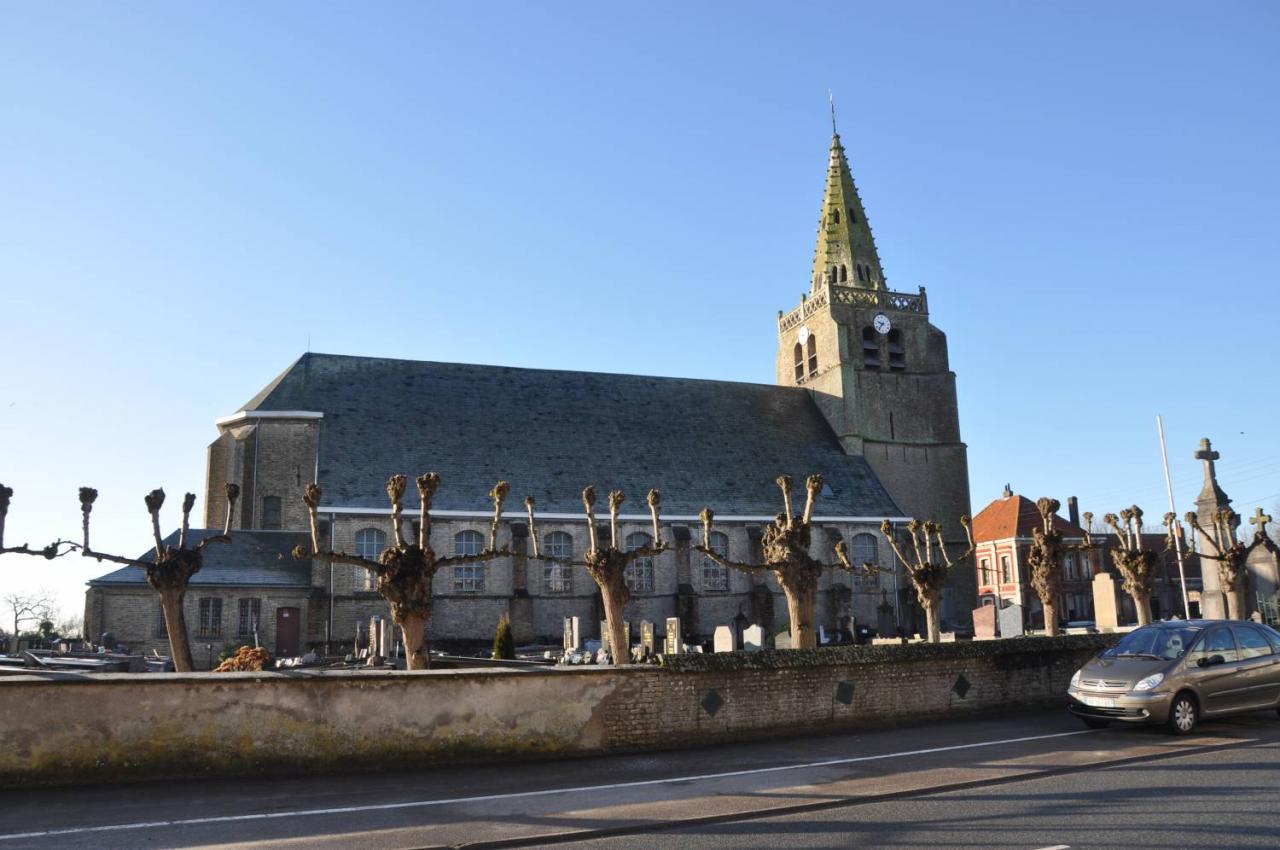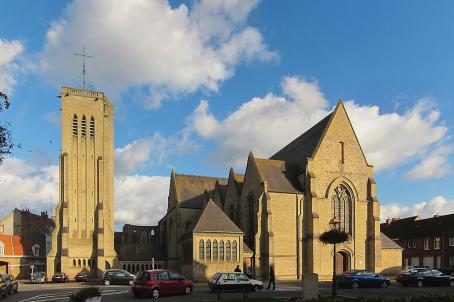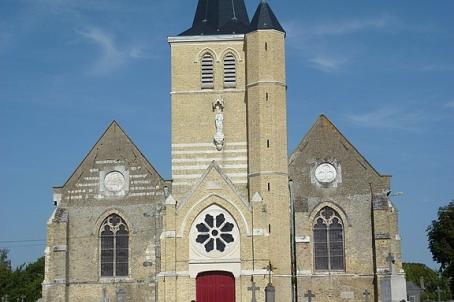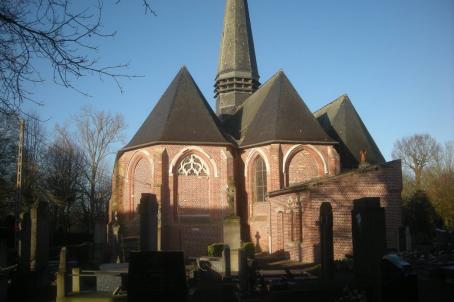Church of Saint-Martin

The Church of Saint-Martin is located in Looberghe, in the Hauts-de-France region. The original church, burned by the English in 1435, was rebuilt in the eighteenth century, thanks to a special tax. It has an imposing choir and two lower side chevats whose pilasters accentuate the "eighteenth" silhouette. Inside, one will notice the classified organ, installed in 1715.
About this building
The Church of Saint-Martin is located in Looberghe, in the Hauts-de-France region. The original church, burned by the English in 1435, was rebuilt in the eighteenth century, thanks to a special tax. It has an imposing choir and two lower side chevets, whose pilasters accentuate the "eighteenth" silhouette.
The tower on the facade is massive; twin windows illuminate the bell chamber and a large opening overlooks the central entrance. It is topped by an elegant spire with hooks and a perforated railing. The building includes a central vessel, two aisles, a transept, a choir, two chapels, a bell tower, a sacristy, and a catechism room.
Inside, there is a classified organ that was installed in 1715.





